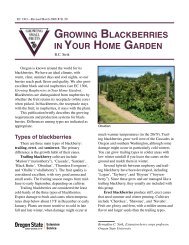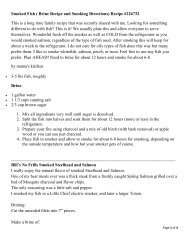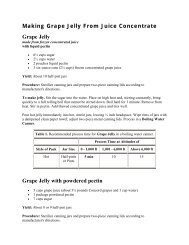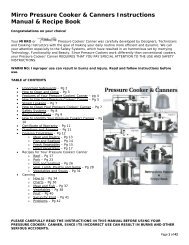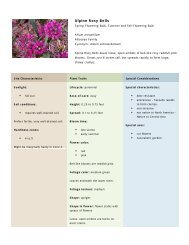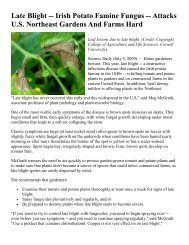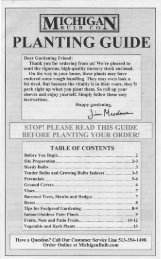Strawberry and Raspberry Pest Management in Wisconsin
Strawberry and Raspberry Pest Management in Wisconsin
Strawberry and Raspberry Pest Management in Wisconsin
Create successful ePaper yourself
Turn your PDF publications into a flip-book with our unique Google optimized e-Paper software.
Table 6. Spray schedule for strawberries—BEARING BEDS (cont<strong>in</strong>ued)<br />
When to spray Problem Treatment Formulation Rate/acre Remarks<br />
DURING HARVEST Diseases<br />
anthracnose<br />
gray mold<br />
Insects<br />
mosquitoes<br />
AFTER HARVEST Diseases<br />
(2 weeks after harvest or as<br />
often as needed)<br />
Any of the fungicides listed for<br />
Early Bloom.<br />
If fungicides were applied dur<strong>in</strong>g bloom, additional<br />
applications for gray mold should not be necessary<br />
at this time unless warm, wet/humid weather<br />
occurs.<br />
Do not exceed four applications of azoxystrob<strong>in</strong> or<br />
5 applications of pyraclostrob<strong>in</strong> per year. Do not apply<br />
more than 56 oz/a of Switch per year.<br />
Check table 2 on page 4 for preharvest <strong>in</strong>tervals.<br />
no material registered To control mosquitoes dur<strong>in</strong>g harvest, use pyrethr<strong>in</strong>.<br />
Follow manufacturer’s directions.<br />
sap beetles acetamiprid 30 SG 4.0-6.9 oz<br />
70 WP 1.7-3.0 oz<br />
leaf diseases:<br />
angular leaf spot<br />
leaf blight<br />
leaf scorch<br />
leaf spot<br />
Any of the fungicides listed for<br />
leaf diseases dur<strong>in</strong>g Early Bloom.<br />
red stele fosetyl-alum<strong>in</strong>um 80WDG 2.5–5.0 lb<br />
mefenoxam Gold EC 1.0 pt<br />
phosphorous acid rates vary<br />
Insects<br />
aphids<br />
spittlebugs<br />
whiteflies<br />
aphids<br />
strawberry leafroller<br />
acetamiprid 30 SG 1.9-6.9 oz<br />
70 WP 0.8-3.0 oz<br />
Provado 1.6F 3.75 fl oz<br />
*bifenthr<strong>in</strong> WSB 6.4–32.0 oz<br />
carbaryl 80S 1.5–2.5 lb<br />
50WP 2.0–4.0 lb<br />
4F, XLR 1.0–2.0 qt<br />
*diaz<strong>in</strong>on 4E 1.5–2.0 pt<br />
50WP 1.5–2.0 lb<br />
endosulfan 50WP 2.0 lb<br />
3EC 1.3 qt<br />
malathion 25WP 6.0–8.0 lb<br />
8EC, 8F 1.5–2.0 pt<br />
cyclamen mite endosulfan 50WP 4.0 lb<br />
3EC 2.66 qt<br />
spider mite *abamect<strong>in</strong> 0.15EC 16.0 fl oz<br />
*bifenthr<strong>in</strong> WSB 16.0–32.0 oz<br />
fenbutat<strong>in</strong> oxide 50WP 1.5–2.0 lb<br />
*fenpropathr<strong>in</strong> 2.4EC 16–21.3 fl oz<br />
* Restricted-use pesticide—can only be applied by a certified applicator.<br />
Apply every 7–14 days. If angular leaf spot has been<br />
a problem this grow<strong>in</strong>g season, <strong>in</strong>clude a copper<br />
fungicide (see “Disease Notes”). See additional<br />
remarks for Early Spr<strong>in</strong>g or Prebloom.<br />
See remarks under Early Spr<strong>in</strong>g.<br />
Carbaryl may aggravate aphid <strong>and</strong> spider mite<br />
problems.<br />
<strong>Strawberry</strong> leafroller may also be controlled with<br />
sp<strong>in</strong>etoram at the rate of 6.0-10.0 fl oz/acre.<br />
23




